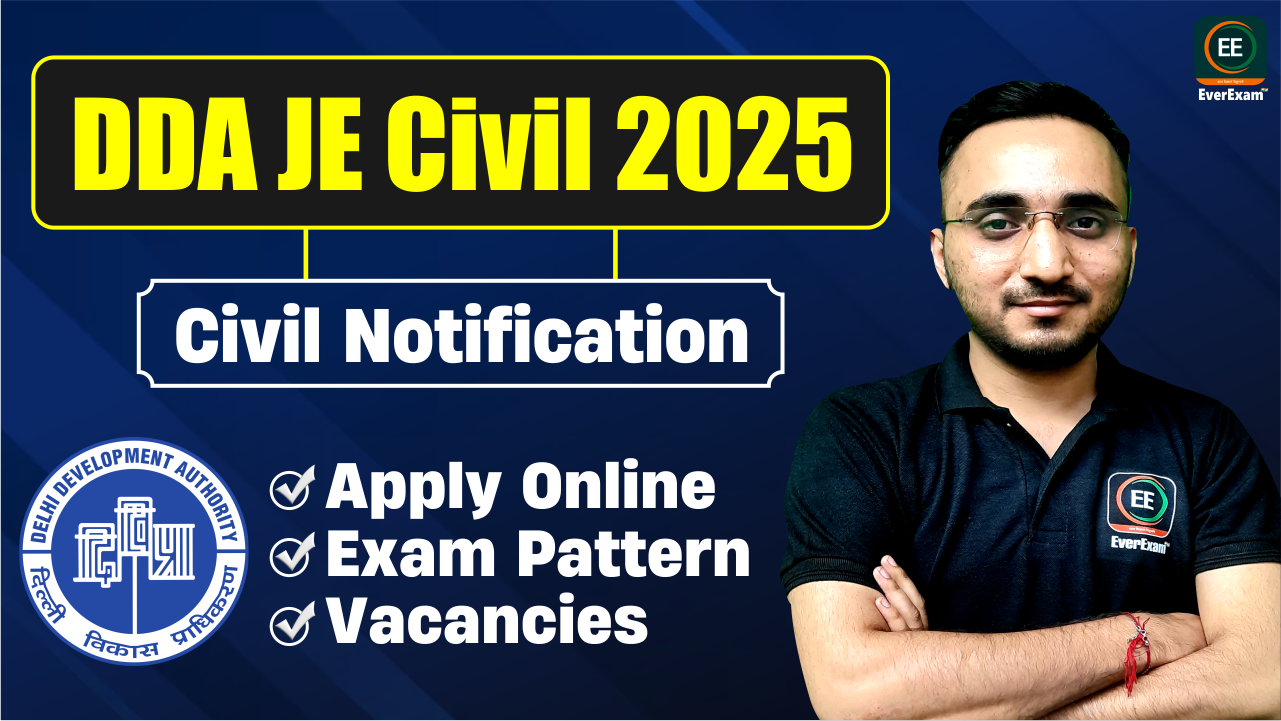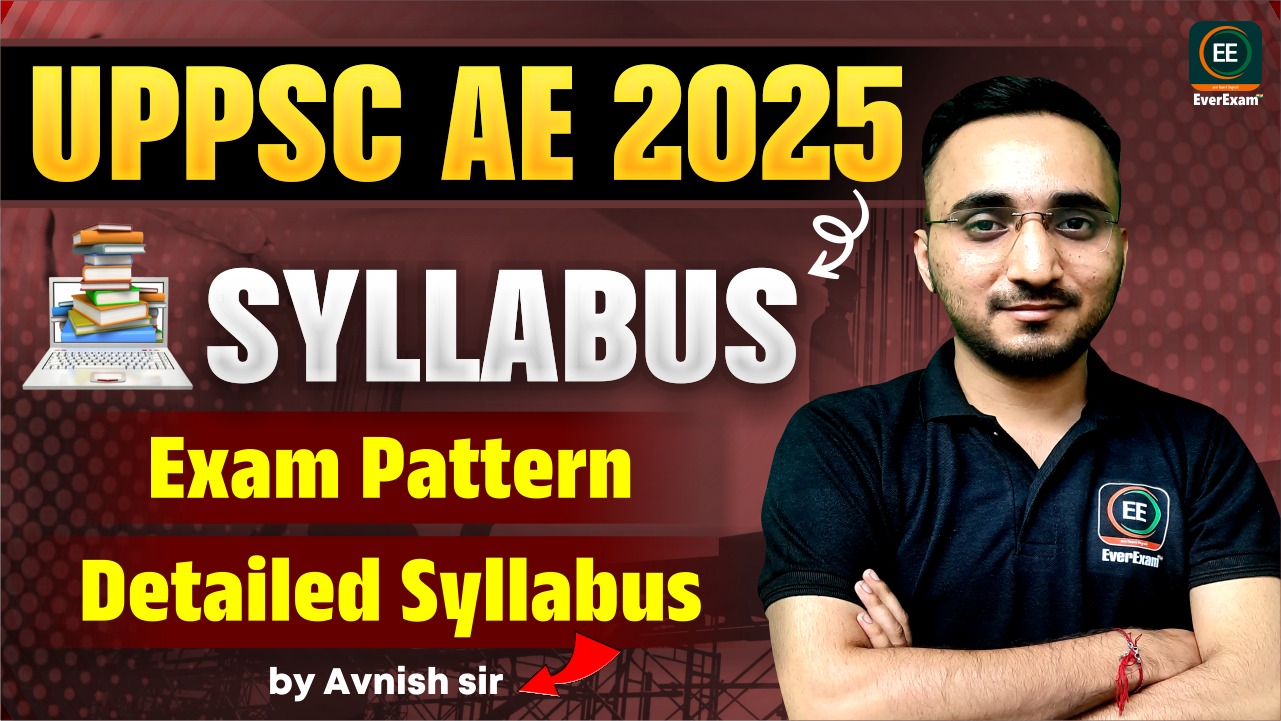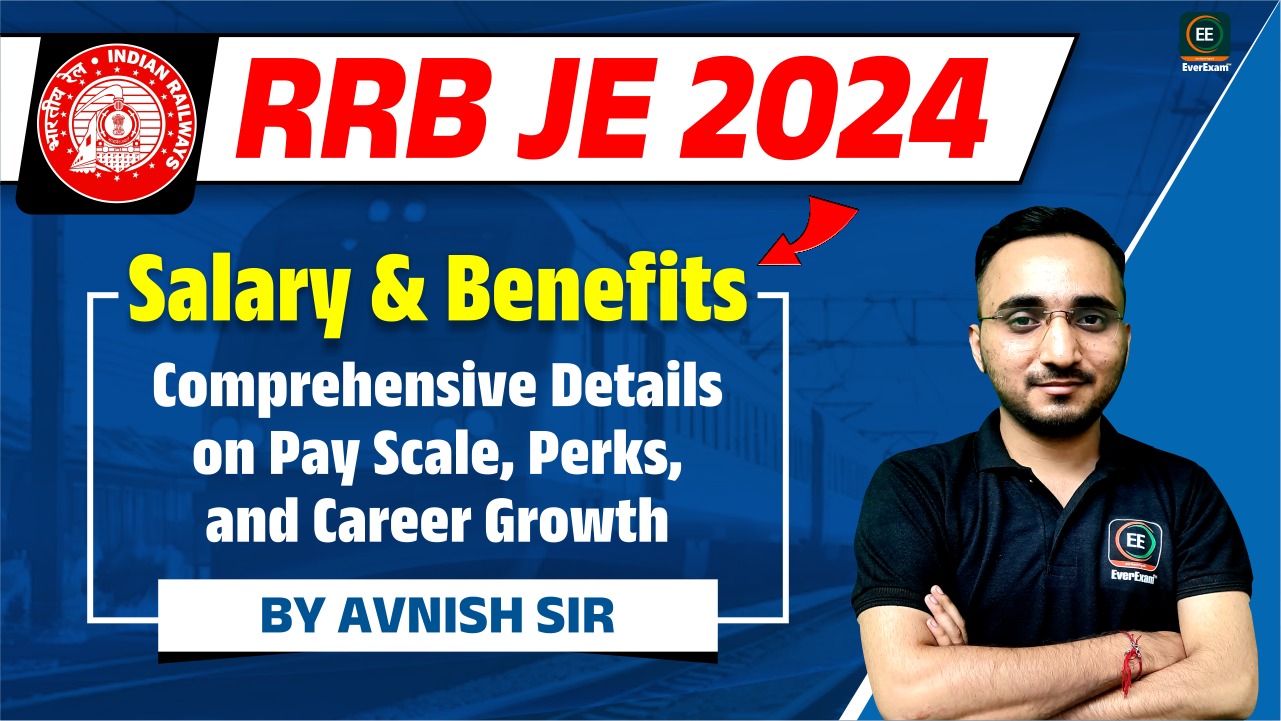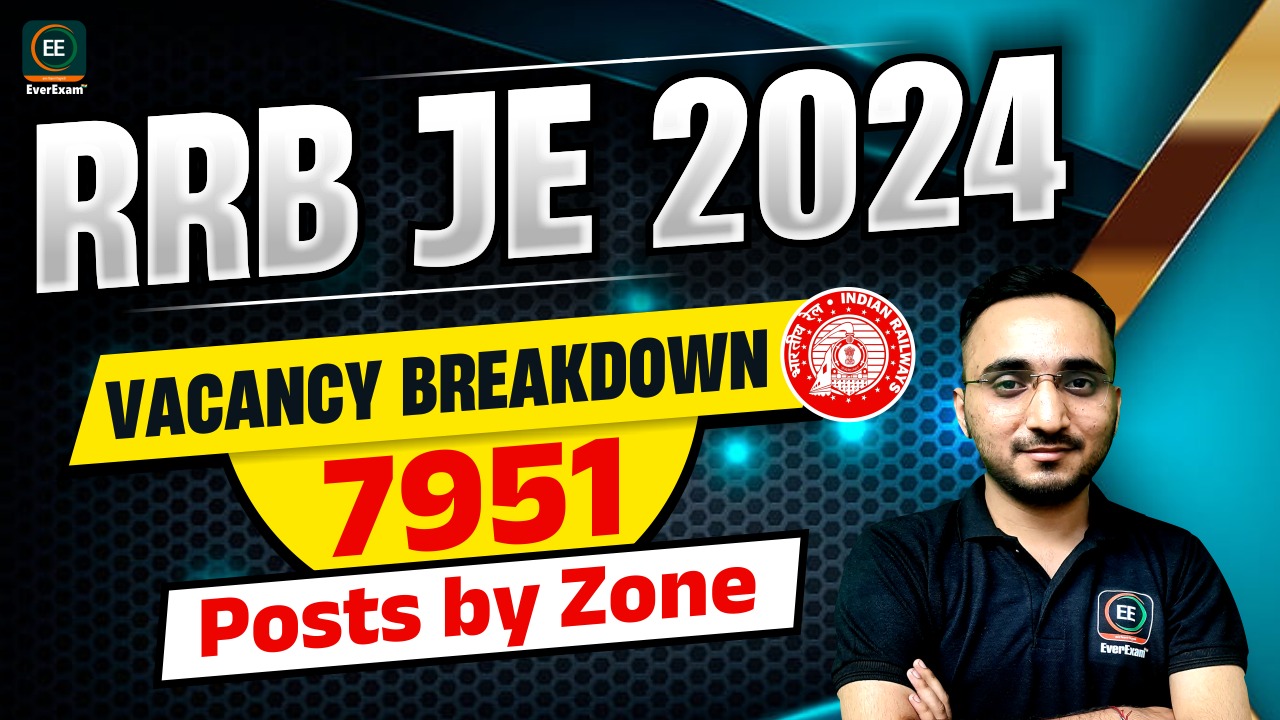Comprehensive Guide to UPSSSC JE Syllabus 2025: Exam Pattern & Preparation Tips
UPSSSC JE Syllabus 2024 is available here to excel the aspirant's preparation. Check the comprehensive UPSSSC JE Syllabus and Exam Pattern 2024 in this article.
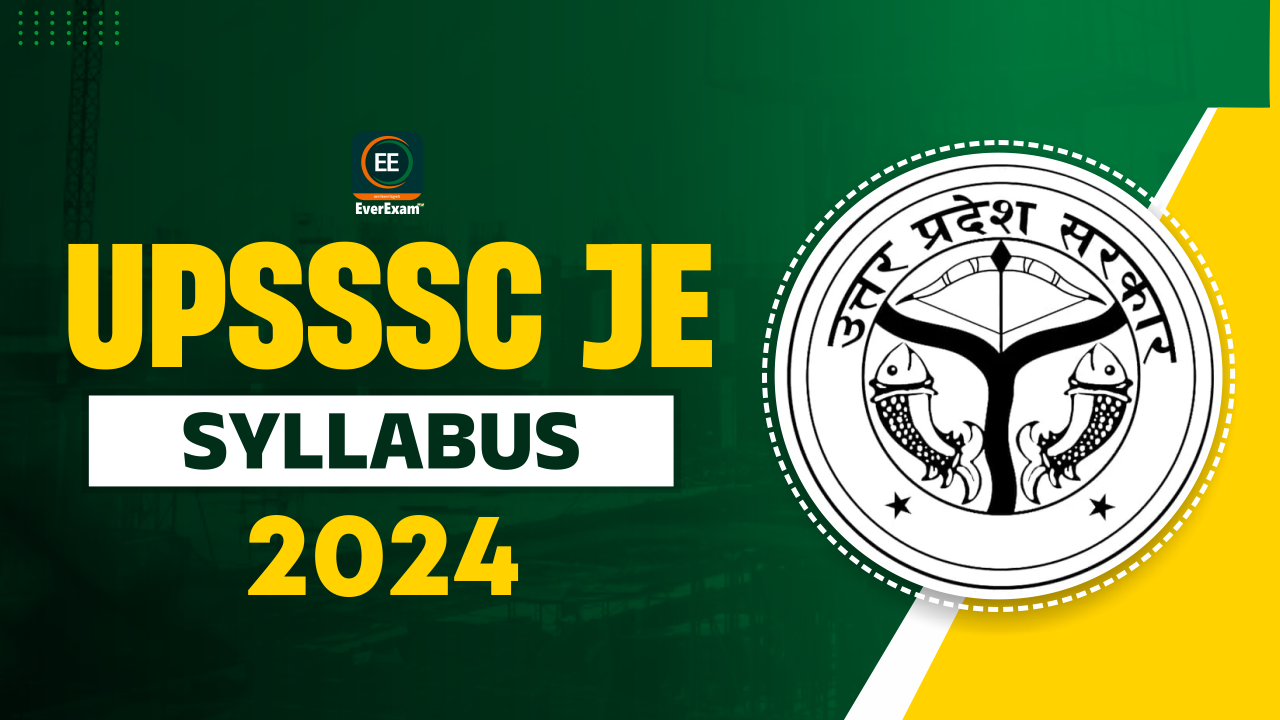
The Uttar Pradesh Subordinate Services Selection Commission (UPSSSC) has announced 4016 vacancies for the Junior Engineer (Civil) post under various state departments. The online application process began on 7th May 2024 at upsssc.gov.in.
The selection process for UPSSSC JE 2024 includes a written exam followed by an interview. To excel in the exam, candidates need a thorough understanding of the syllabus to strategize their preparation effectively.
In this article, we provide the detailed UPSSSC JE Syllabus 2024 to help aspirants streamline their preparation and achieve their goals.
UPSSSC Junior Engineer Syllabus 2024
To prepare effectively for the UPSSSC Junior Engineer Exam 2024, candidates must have a clear understanding of the syllabus. Familiarity with the syllabus ensures a focused and strategic preparation, increasing the chances of achieving a high score.
On this webpage, aspirants can explore the topic-wise UPSSSC JE Syllabus along with the exam pattern for 2024. Use this information as a foundation to design your preparation plan and stay ahead in the competition.
TAP NOW👉 ENROLL IN UPSSSC JE 2024 BATCH 👈TAP NOW
📞Contact Us Now: 👆Tap to Call for UPSSSC JE 2025 Civil Engineering Syllabus Assistance
UPSSSC JE Syllabus 2024 Overview
The UPSSSC JE Syllabus 2024 has been officially released by the Uttar Pradesh Subordinate Services Selection Commission (UPSSSC) to help aspirants prepare effectively for the exam. Below is a summarized table highlighting the key details:
| Aspect | Details |
| Recruitment Authority |
Uttar Pradesh Subordinate Services Selection Commission |
| Post Name |
Junior Engineer (JE) – Civil |
| Number of Posts | 4612 |
| Category | AE/JE Jobs |
| Application Start Date | 7 May 2024 |
| Last Date to Apply | 13 July 2024 |
| Job Location | Uttar Pradesh |
| Selection Process |
Written Exam & Interview |
| UPSSSC JE Syllabus 2024 | Available Here |
| Official Website | www.upsssc.gov.in |
UPSSSC JE Syllabus 2024 – Detailed Topic-Wise Breakdown
To excel in the UPSSSC JE Exam 2024, candidates should begin their preparation by thoroughly understanding the syllabus and creating an effective study plan. Below is the topic-wise breakdown of the UPSSSC JE Syllabus 2024 to help aspirants streamline their preparation and aim for top scores in the exam.
Examination plan
- Total Questions: 100
- Total Marks: 100 (Each question carries 1 mark)
- Duration: 2 hours
- Negative Marking: 0.25 marks will be deducted for each wrong answer (i.e., 25% of the marks allotted for that question).
| Part | Subject | Number of Questions | Total marks | Time period |
|
Part-1 |
1. Strength of Materials & Theory of Structures | 5 | 5 |
Two hours |
| 2. Design of Reinforced Concrete Structures | 10 | 10 | ||
| 3. Steel & Machinery Structures | 5 | 5 | ||
| 4. Estimation, Costing & Valuation | 5 | 5 | ||
| 5. Soil Mechanics and Foundation Engineering | 5 | 5 | ||
| 6. Surveying | 5 | 5 | ||
| 7. Transportation Engineering | 5 | 5 | ||
| 8. Environment and public health Engineering | 5 | 5 | ||
| 9. Building materials and construction | 10 | 10 | ||
| Irrigation Engineering | 5 | 5 | ||
| Fluid mechanics | 5 | 5 | ||
| Part-2 | Knowledge of concept of computer and information Technology and contemporary technological development and innovation in this field |
15 | 15 | |
| Part-3 | General information related to the state of Uttar Pradesh | 20 | 20 | |
| Total | 100 | 100 | ||
Note: There is a provision of negative marking for each wrong answer for the above examination, which will be 25% percent i.e. 1/4 of marks prescribed for that question.
TAP NOW👉 ENROLL IN UPSSSC JE 2024 BATCH 👈TAP NOW
📞Contact Us Now: 👆Tap to Call for UPSSSC JE 2025 Civil Engineering Syllabus Assistance
SYLLABUS
Part-1
(Subject related Knowledge)
1. Strength of Materials & Theory of Structures
Effect of a force, tension and compression, free body diagram, virtual work, force distribution system. Principle of energy, force conservation of energy and momentum, rotation of rigid bodies about fixed axis, mass moment of inertia. Stresses and strains, types of stresses and strains, definition of tension, simple compression, shear, bending, torsion, volumetric and lateral strain, Poisson's ratio, Hooke's law. Bending moment and shear force, types of beam, simply supported, cantilever, fixed, overhanging and continuous beams. Analysis of trusses, slope and deflection of beams. Long columns, short columns & struts, slenderness ratio, Torsion in circular shaft, combined bending, torsion and axial thrust, strength of hollow and solid shaft.
2. Design of Reinforced Concrete Structures
Design based on working stress method, flexural strength, shear strength and bond strength of a singly reinforced RCC beam, T-beams. Simply supported and cantilever beams, determinate and indeterminate structures, design of lintels, design of a cantilever beam and slab, design of doubly reinforced concrete beam. Design Scanned wit of RCC slab, design of one way and two-way slab, stair cases. Design of reinforced brick beams, slab & lintels, design of T-beams. Design of columns and column footings, cantilever retaining walls, components of overhead water tank and multistoried framed structures, Introduction to design based on limit state method. Prestressed concrete.
3. Steel & Machinery Structures
Tension and compression members in steel. Design of steel beams. Design of simple column & bases. Design of simple trusses, purlins, plates and girder.
4. Estimation, Costing & Valuation
Estimating, costing and method of valuation, analysis of rates. Method and unit of measurement, Value and cost, scrap value, salvage value, depreciation value. Simpson's rule, centerline method, mid-section formula for earthwork calculation, Construction management, account & entrepreneurship development.
5. Soil Mechanics and Foundation Engineering
Fundamental terms and their relationships, Classification and identification of soil. Phase relationship index property, laboratory determination. Capillary phenomenon permeability, factors affecting permeability. Compaction, methods of compaction, consolidation, difference compaction and consolidation, stresses in soil, shear strength, coulomb's equation, unconfirmed compression test. Earth pressure retaining structures- dams and retaining walls. Concept of slope establishments. Shallow and deep foundations, classifications of piles, piles and pile caps. Stablisation of soils by lime and cement. Sub-surface exploration & standard tests, effective stress, active and passive earth pressures, dams and retaining wall.
6. Surveying
General principles of surveying Surveying, principle of surveying, measurement of distance, working of prismatic compass, chain surveying, compass traversing, bearings, local attractions, types of traversing, traverse computations, corrections and missing readings. Leveling theory, Temporary & permanent adjustment of levels, types of leveling, reciprocal leveling, L section and cross section, retraction and curvature corrections. Contouring- characteristics, method of contouring, uses and plotting of contours. Plane table surveying orientation, plotting methods, two & three- point problems, Lehmann's rule errors and precautions. Theodolite- adjustment (temporary & permanent) measurement of angles, curves, horizontal and vertical curves, their design and layout transition curves. Surveying equipment, minor instruments Abney level, tangent clinometer, Ceylon ghat tracer, pantograph and planimeter, temporary & permanent adjustment of dumpy level.
7. Transportation Engineering
Highway engineering cross sectional elements, geometric design, types of pavements, pavement materials aggregates and bitumen, different tests, design of flexible and rigid pavements. Water Bound Macadam (WBM) and Wet Mix Macadam (WMM). gravel road, bituminous construction, rigid pavement joint, pavement maintenance, highway drainage. Railway engineering- components of permanent way-sleepers, ballast, fixtures and fastening, track geometry, points and crossings, track junction, stations and yards. Traffic engineering different traffic survey, speed-flow-density and their interrelationships, intersections and interchanges, traffic signals, traffic operation, traffic signs and markings, road safety.
TAP NOW👉 ENROLL IN UPSSSC JE 2024 BATCH 👈TAP NOW
📞Contact Us Now: 👆Tap to Call for UPSSSC JE 2025 Civil Engineering Syllabus Assistance
8. Environmental and Public health Engineering Sources of water,
quality of water supply, water treatment, water distribution, laying of pipes, building water supply & maintenance. Quantity of sewage, sewerage systems, sanitation and drainage, disposal of rainfall and domestic wastes, waste water and garbage, plumbing for buildings, septic tanks and soak pit, sewage treatment, circular sewer, oval sewer, sewer appurtenances. Solid waste management types and effects, types of pollutions, containment, effects, control. Pollutants, causes, effects, control.
9. Building Materials and Construction
Bricks, their classification and characteristics, building stones source, quarrying, classification and properties, lime properties, cement types, properties and tests, storage of cement. Timber and wood-based products, types, properties and uses. Types of laminates and its uses, paints, varnishes and distempers, glass and plaster, shuttering etc. Lime concrete, cement concretes, ingredients, grading of aggregates, workability, importance of water quality, water cement ratio, batching, mixing, laying, compaction and curing. Building constructions, detailing of walls, floors, roots, stair cases, doors and windows, finishing of building, plastering. pointing, damp proofing etc. Ventilation and air conditioning. firefighting.
10. Irrigation Engineering
Introduction, definition of irrigation, necessity of irrigation, types of irrigation, sources of irrigation, rainfall & run-off, catchment area, Dicken's & Ryve's formula, types of rain gauges, stream gauging. Water Requirement of crops, crop season, duty, delta and base period, their relationship, irrigation methods & efficiencies. Gross command area, culturable command area, intensity of irrigation, irrigable area. Types of wells, aquifer, types of ground water flow, construction of open wells and tube wells. Yield of an open/tube well and problems, wind mills, lift canals and their design, construction and water scheduling. Irrigation canals, perennial irrigation, different parts of irrigation canals and their functions, canal cross sections, classification of canals, design of irrigation canals Chezy's formula, Manning's formula, Kennedy's and Lacey's silt theory and equations, critical velocity ratio, various types of canal lining and its advantages. Canal head works, layout and functions of different part, difference between weir and barrage. Regulatory works, cross head regulators, falls, energy dissipates, outlets and escapes. Cross drainage works, aqueduct, syphon, super passage, level crossing, inlet and outlet. Dams, classification of dams, labelled cross section, spillways. Water logging, causes and effect of water logging, detection, prevention and remedies, surface and sub-surface drainage and their layout, field drainage, salinity controlling measures, groundwater recharging measures, flood protection, estimation of flood discharges, systems of flood warning, river behaviors, training works and control, marginal embankments, their design, causes of failure, spurs & dykes, attracting & repelling types. flood management, relief & rehabilitation measures.
11. Fluid Mechanics
Properties of fluids, hydrostatic pressure, measurement of pressure, kinematics of fluid flow. Dynamics of fluid flow, Bernoulli's theorem, measurement of flow, pitot tube, piezometer, orifices, venturi meter, current meter. Flow through pipes, water hammer, Reynold's number. Flow through open channels, uniform flow, Chezy's and Manning's formula, most economical section. Measurement of discharges by weirs and notch. Hydraulic pumps (reciprocating and centrifugal), turbines (impulse & reaction).
Part-2
(Knowledge of Concepts of Computer and Information
Technology and Contemporary Technological Development and Innovation in this field)
- History, Introduction and Application of Computer, Information Technology, Internet and World Wide Web (WWW).
- General Knowledge related to:
1 Hardware and Software.
2 Input and Output.
3 Internet Protocol/IP Address.
4 IT gadgets and their application,
5 Creation of e-mail ID and use/operation of e-mail.
6 Operation of Printer, Tablet and Mobile.
7 Important elements of Word Processing (MS-Word) and Excel Processing (MS-Excel).
8 Operating System, Social Networking, e-Governance
- Digital Financial Tools and Applications.
- Future Skills and Cyber Security.
- Technological Development and Innovation in the field of Computer and Information Technology (Artificial Intelligence, Big Data Processing, Deep Learning, Machine Learning, Internet of Things) and India's achievements in this field etc.
Part-3
(General Information related to The State of Uttar Pradesh)
In this part of the question paper, questions based on History, Culture, Art, Architecture, Festivals, Folk Dance, Literature, Regional Languages, Heritage, Social Customs and Tourism, Geographical Landscape and Environment, Natural Resources, Climate, Soil, Forest, Wildlife, Mines and Minerals, Economy, Agriculture, Industry, Business and Employment, Polity, Administration of Uttar Pradesh and Current Events and Achievements of Uttar Pradesh State in various fields etc. will be asked from the candidates.
TAP NOW👉 ENROLL IN UPSSSC JE 2024 BATCH 👈TAP NOW
📞Contact Us Now: 👆Tap to Call for UPSSSC JE 2025 Civil Engineering Syllabus Assistance
|
Online Live Batches by Everexam |
Grab Now |
|
Batch Name |
Explore Link |
| SSC JE Pre to Mains 2025 –(Civil) | |
| RRB JE 2024-2025 –(Civil) | |
| Rajasthan JE CTQ batch–(Civil) | |
|
UPSSSC JE CTQ batch-(Civil) |
